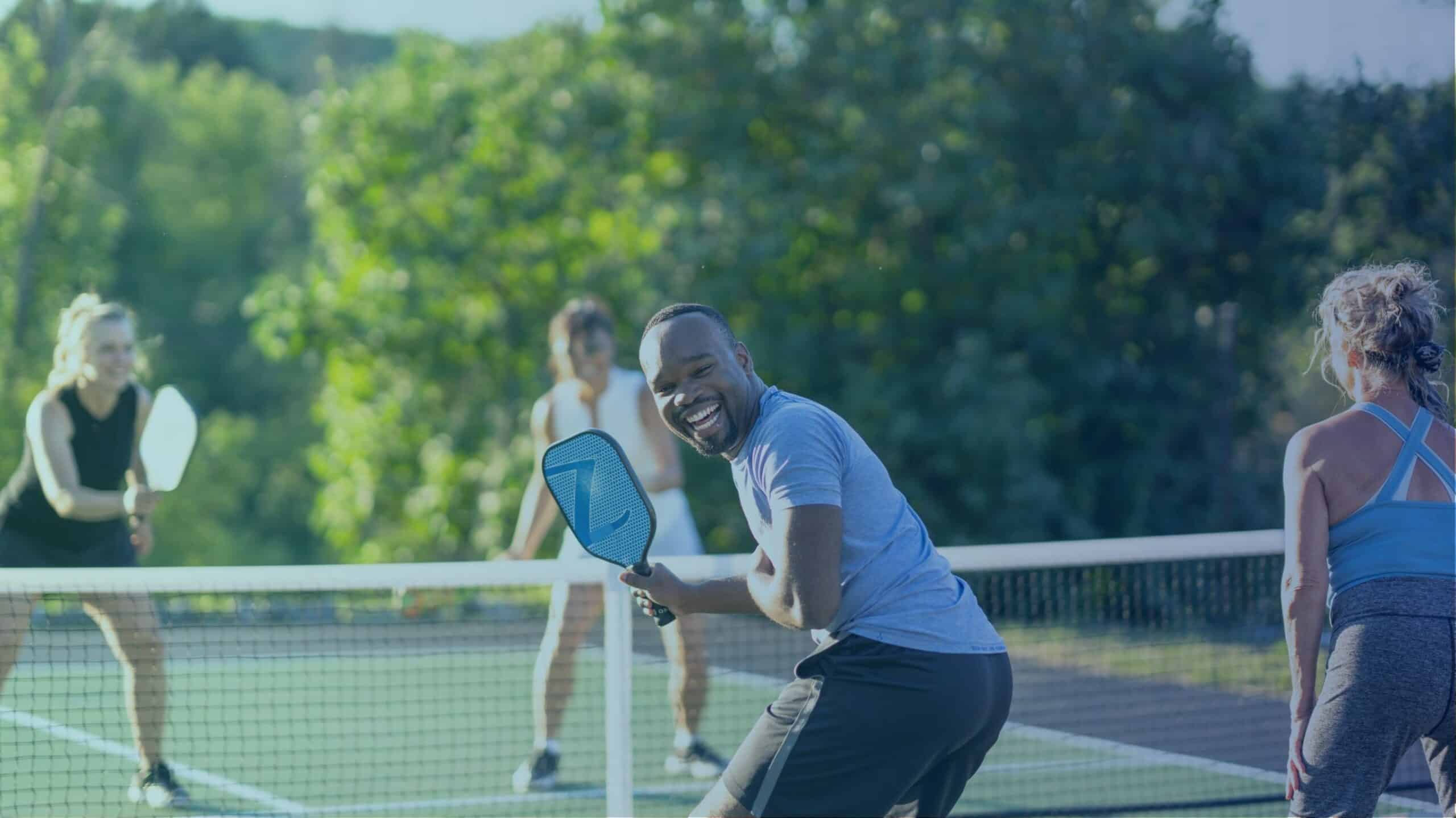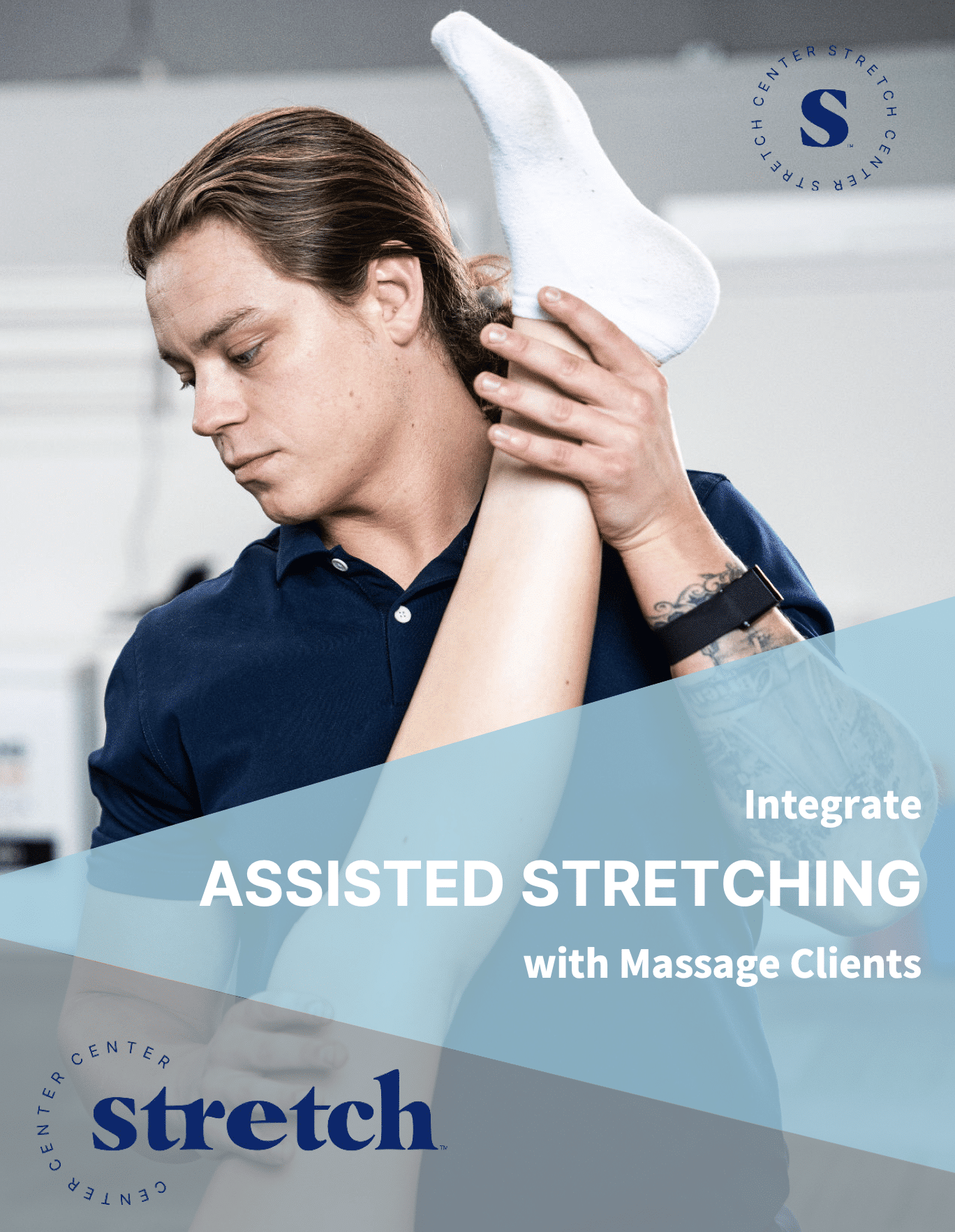Stay Quick, Prevent Injury, and Play Pain-Free
Whether you’re a seasoned veteran coming from tennis or a newcomer looking for a fun, social way to stay active, chances are you—or someone you know—has caught the bug for the latest sports craze: pickleball. It’s been the fastest-growing sport in the U.S. for three years running, with over 36.5 million Americans participating in 2023 alone. Pickleball is an excellent social activity for all ages, but make no mistake—it’s fast-paced, high-rep, and physically demanding. The sport requires quick sprints, sharp pivots, rotation, and a solid mix of balance and coordination. And while it’s popular across all age groups, over 50% of regular pickleball players are over age 50!
With that core demographic in mind, it’s no surprise that certain injuries are common due to the sport’s explosive movements, repetitive swinging, and constant lateral agility. Some of the most frequent injuries include (but aren’t limited to): ankle/Achilles strains, knee pain, rotator cuff injuries, wrist and forearm strains, lower back tightness, and elbow tendonitis (move over Tennis Elbow—Pickleball Elbow is in town). The good news? You don’t have to stay sidelined. With smart preventative stretching before you play—and recovery-focused stretching after—you’ll be far better prepared to stay injury-free. That’s where Stretch Center can help!
The dynamic flexibility, rotational mobility, and balance/stability required for pickleball can all be greatly improved through proper stretching—especially under the guidance of a Stretch Center Stretch Practitioner. When flexibility is lacking, players tend to compensate with inefficient movement patterns, leading to overuse injuries and a drop in performance. Stretching, on the other hand, supports smoother court coverage, a greater reach, better postural control, and a much lower risk of injury.
What muscles should you be stretching? For pickleball, we recommend focusing on the rotator cuff muscles, forearms, obliques, thoracic spine (rotation), lower back, hips (flexors and rotators), glutes, hamstrings, quads, and calves. That’s a lot—but that’s the beauty of pickleball: it’s a full-body workout. All the more reason to take care of your body before and after a good session.
How do you do that?
Dynamic Stretching: Before You Play
Dynamic stretching means moving through ranges of motion—no long holds. The goal is to lubricate joints, activate muscles, and prep your body for the demands of play. Great options include:
- Torso twists
- Leg swings (front-to-back and side-to-side)
- Arm circles (small to big)
- Hip circles (both ways)
- 90/90 hip rotations
- Wrist rolls
- Deep bodyweight squats
These movements prime your nervous system, loosen stiff muscles, and hydrate your joints—reducing injury risk without sacrificing power output.
Static Stretching: After You Play
Post-game is when static stretching—holding positions for 30 seconds or so—works best. It helps promote recovery, lengthen tight muscles, and relax tissues. Some go-to stretches:
- Seated forward fold (hamstrings, lower back)
- Figure-4 hip stretch (glutes, hip rotators)
- Doorway or dowel chest stretch (pecs, shoulders)
- Thread the needle (thoracic spine)
- Kneeling hip flexor stretch (hips, quads)
- Wrist extensor stretch (forearms)
Why Assisted Stretching Is a Game-Changer
Now you might be wondering, “If I can do all this myself, why would I go to Stretch Center?” Great question.
Assisted Stretching with a certified Stretch Center Practitioner allows you to completely relax into every stretch—just breathe and let your practitioner do the work, much like a massage. Our practitioners help you achieve muscle lengths and rotation depths you might not be capable of on your own, especially in stubborn areas like the hips and thoracic spine. They’ll tailor your session to your unique body: maybe some muscles don’t need much work, while others need extra attention. Plus, they can apply advanced techniques like Active-Assisted Stretching or Proprioceptive Neuromuscular Facilitation (PNF) to help you reach mobility goals you thought were out of reach—much like that ball you missed last weekend.
The recovery-focused, passive nature of assisted stretching lets you fully relax and feel tension melt away—whether you’re bouncing back from a tough match or just keeping your body in peak condition.
Final Thoughts
Pickleball is an amazing workout—and the social side makes it even better. But don’t let avoidable injuries bench you from playing your best (and hanging with your crew). Stretching is easy to add to your routine: just 5–10 minutes before and after you play, or book a 25–55-minute session with a Stretch Practitioner to let them do the work for you.
Stretching is essential for staying in the game and bringing your best every time you step on the court. (And hey, if your back is hurting from carrying your teammate, you definitely know where to go—Stretch Center has your back!)
Coaches, trainers, and therapists: Want to add assisted stretching to your services? Visit stretchcenter.com/certification to learn more about becoming certified.





